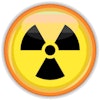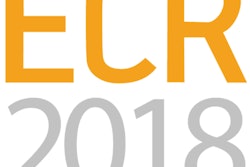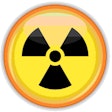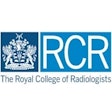
A prior false-positive finding on mammography triples the likelihood that a woman will have an interval breast cancer, according to a study from Norway published on 14 December in Radiology. The findings indicate that more frequent screening could be advisable for women with false-positive findings.
The researchers focused on interval breast cancer rates in more than 400,000 women with a negative versus false-positive screening. Led by Solveig Hofvind, PhD, from the Cancer Registry of Norway in Oslo, they found a threefold higher rate of interval breast cancer among women with a previous false-positive screening compared with those with a previous negative screening in their last biennial screening round (Radiology, 14 December).
"I was surprised that the increased odd ratio was as high as it was -- about three times higher," she wrote in an email to AuntMinnieEurope.com. "Does it mean the interval breast cancers are slow-growing -- and that we do not gain that much by detecting the cancer some months/a year earlier?"
The Norwegian situation
The Norwegian research builds on other studies, such as one from Spain that found women who have false-positive results on mammography have almost twice the risk of breast cancer than women with negative mammography exams. The results could support annual screening versus every two years for high-risk women. Hofvind and colleagues followed a similar track with their research.
"False-positive screening tests are considered harmful in mammographic screening," Hofvind wrote. "I was wondering whether these women were at an increased risk of breast cancer, because prior studies have shown that women with a prior benign lesion are at higher risk."
The researchers turned their attention to interval cancers, which European clinicians define as a primary cancer diagnosed in women who had a negative screening for cancer or negative workup after abnormal screening, either before the next invitation to screening or within a time period equal to the screening interval.
Interval breast cancers represent a challenge in screening because they decrease the sensitivity of programs and contribute substantially to mortality in the screened population. Also, 3% to 35% of interval cancer cases may represent findings that were detectable but overlooked at the time of screening, according to the researchers.
The study team compared rates and tumor characteristics of interval breast cancers detected after a negative versus false-positive screening among women participating in the Norwegian Breast Cancer Screening Program.
The retrospective study included 423,445 women ages 49 to 71 who underwent 789,481 full-field digital mammographic (FFDM) screening examinations biennially between 2004 and 2012. Researchers estimated the rates and odds ratios of interval breast cancer among women with a negative versus a false-positive screening by using logistic regression models adjusted for patient age at diagnosis and county of residence.
Hofvind and colleagues found a total of 1,302 interval breast cancers, of which 7.0% (91 of 1,302) were detected among women with a false-positive screening as the most recent breast imaging examination before detection. By using negative screening as the reference, adjusted odds ratios of interval breast cancer were 3.3 and 2.8 for women with a false-positive screening without and with needle biopsy, respectively.
Women with a false-positive screening had a significantly higher proportion of tumors that were 10 mm or smaller and more grade 1 tumors. They also had a higher proportion of cases with lymph nodes positive for cancer. Details are in the table below.
| Comparison of negative screening vs. false-positive screening | ||
| Negative screening | False-positive screening | |
| Tumors < 10 mm | 14.3% | 50% |
| Grade 1 tumors | 13.2% | 42.9% |
| Lymph nodes positive for cancer | 40.9% | 13.3% |
The researchers also identified 42.9% (39 of 91) of the false-positive cases to be the same lesion as the interval breast cancer, meaning mammographers are detecting cancers early but letting these patients go because of equivocal diagnostic imaging evaluation and/or insufficient sampling, they added.
"Although we initially hypothesized that women with interval breast cancer after false-positive screening would have less favorable characteristics than those after negative screening, we did not find this to be the case," Hofvind and colleagues wrote. "Almost half (39 of 91) of the abnormalities leading to recall for further assessment but deemed negative at diagnostic evaluation corresponded to the interval breast cancer found on the retrospective review of screening and diagnostic imaging."
Age didn't differ for the two groups, whereas time since previous screening until diagnosis of breast cancer was 36 days less for those screened negative versus those screened false-positive, which is consistent with the finding of more rapid-growing tumors among those detected after a negative versus a false-positive screening examination.
However, the time difference is not of substantial influence for tumor progression, according to the researchers. Furthermore, histopathologic characteristics of the interval breast cancer detected after a false-positive screening were comparable with the screen-detected cancers.
"The smaller tumor size and less lymph node involvement among the cases initially identified but let go after diagnostic evaluation compared with those not identified as the same lesions that later appeared as an interval breast cancer make intuitive sense in retrospect: True interval breast cancers (those identified after negative screening and not identified in the retrospective review) would have less favorable prognostic characteristics because these are more likely to represent fast-growing tumors," they wrote.
Clinical context
The study findings suggest that women with a false-positive finding on screening should be offered another mammographic examination within six months or a year, rather than two years, to detect the cancer at an earlier stage. This is likely to decrease the interval breast cancer rate and potentially detect the cancers at an earlier stage, further improving the women's outcomes, according to the study authors.
"In addition, such a screening policy would likely increase the overall trust in the screening program by personalizing the screening regimen on the basis of the increased risk for interval cancers after false-positive screening," they added. "However, the overall benefits and harms of earlier follow-up for women with a false-positive screening, including consideration of women's preferences, should be investigated before new policies are considered."
Along those lines, Hofvind and colleagues will discuss and probably perform a trial to get more evidence about the benefit of calling the false-positive screened women back after one year. However, the study requires a long follow-up time and a lot of screening exams.



















